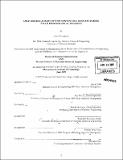Spray drying as part of the continuous manufacturing value proposition at Novartis
Author(s)
Youngman, Adam (Adam Joshua)
DownloadFull printable version (22.46Mb)
Other Contributors
Leaders for Manufacturing Program.
Advisor
Roy E. Welsch and Bernhardt Trout.
Terms of use
Metadata
Show full item recordAbstract
Novartis Technical Operations is considering a complete overhaul of their manufacturing processes. To date, all drugs have been made by using a batch process. In an attempt to lower costs, Novartis is evaluating moving some drug production to a continuous process. Novartis has instituted lean in their production plants and it has been very successful, but what is on the table now is a way to bring lean to the highest level, and a chance to make a seismic shift in manufacturing performance. The continuous manufacturing initiative between Novartis and MIT exists to pursue that idea. My task was to evaluate the economic impact and feasibility of spray drying on drug manufacturing. Spray drying is an advanced manufacturing technique that could allow Novartis to skip multiple steps in chemical & pharmaceutical operations. It is also a process that can be used continuously. I investigated the use of spray drying with X, one of the drugs in Novartis' product pipeline. The major results of this investigation are that drug solubility in the solvent is a critical variable and that X is stable after spray drying. All experiments in the scientific section were performed with the drug dissolved in Ethanol, and all experiments resulted in stable versions of X combined with various additives. The drug solubility directly affects the number of spray dryers necessary for production within an allocated time span. Using economic assumptions that are detailed later in this work, there is a breakeven point for most drug volumes at around 3% drug solubility, assuming additives poses no problems for dissolution. (cont.) Despite economies of scale considerations and factory adjustments, this breakeven point is accurate for drug demands from 1 ton/year to 100 tons/year. Since my experiments were performed at 1.53% drug solubility (too low), I did not prove the economic viability of spray drying X in particular, but rather laid a framework for future studies.
Description
Thesis (M.B.A.)--Massachusetts Institute of Technology, Sloan School of Management; and, (S.M.)--Massachusetts Institute of Technology, Dept. of Materials Science and Engineering; in conjunction with the Leaders for Manufacturing Program at MIT, 2009. Includes bibliographical references (p. 53).
Date issued
2009Department
Leaders for Manufacturing Program at MIT; Massachusetts Institute of Technology. Department of Materials Science and Engineering; Sloan School of ManagementPublisher
Massachusetts Institute of Technology
Keywords
Sloan School of Management., Materials Science and Engineering., Leaders for Manufacturing Program.